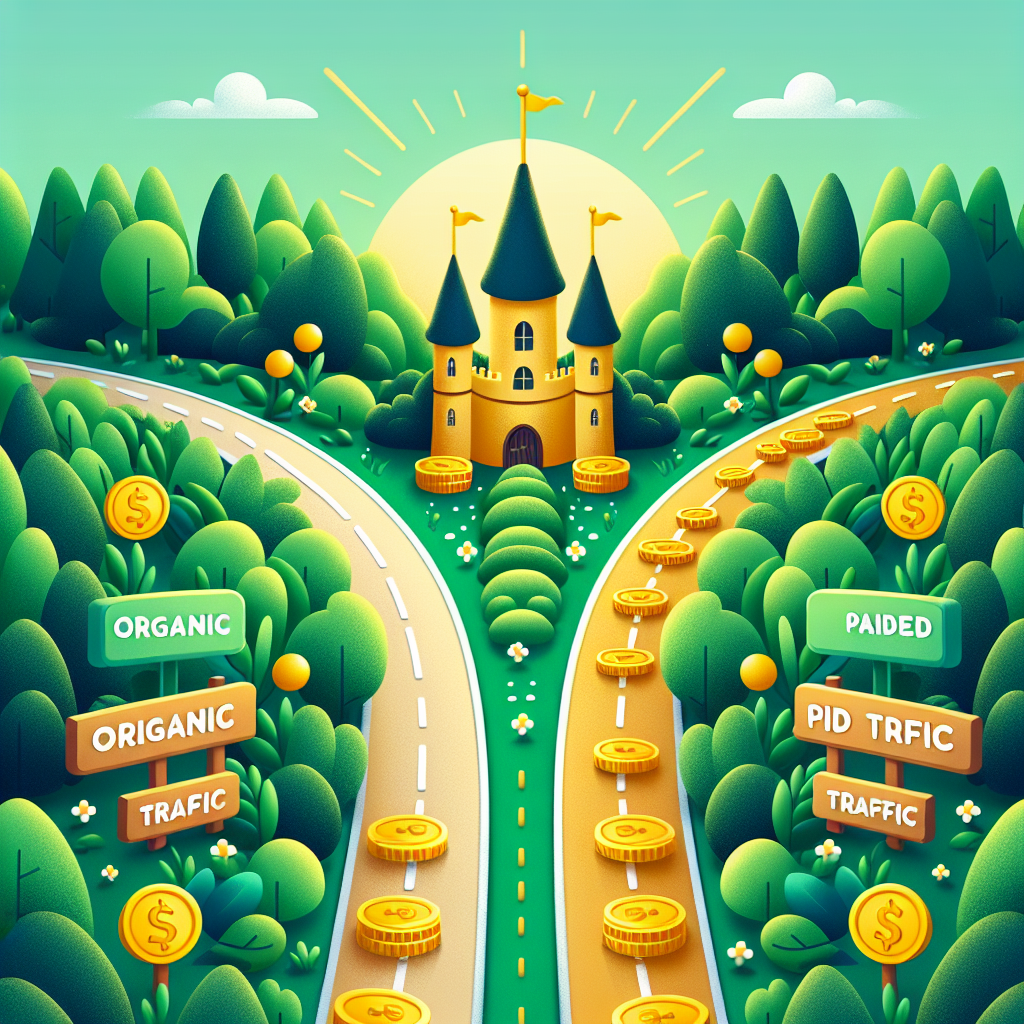Organic vs. Paid Traffic: Which is Better for Your Website?
In the evolving digital landscape, where competition for user attention is fierce, businesses often face the critical decision of choosing between organic and paid traffic to drive visitors to their websites. Each approach has its own set of advantages and disadvantages, and the choice often depends on specific goals, budgets, and long-term strategies. This article aims to dissect the intricacies of both organic and paid traffic to help you make an informed decision for your website.
Understanding Organic Traffic
Organic traffic refers to users who find your website through unpaid, natural search engine results. The primary method to increase organic traffic is through Search Engine Optimization (SEO), which involves optimizing your website’s content, structure, and meta-data to rank higher in search engine results pages (SERPs).
Advantages of Organic Traffic
-
Cost-Effective in the Long Run:
While investing in SEO and content creation requires an initial outlay, the ongoing cost is relatively low once you gain a foothold in the rankings. There are no continual payments to be made every time a user clicks on your link, as with Pay-Per-Click (PPC) advertising. -
Sustainable Results:
Good SEO practices can lead to long-lasting visibility and sustained traffic over time. Unlike paid campaigns that cease to deliver traffic once the budget is exhausted, organic traffic can continue to grow. -
Enhanced Credibility and Trust:
Websites that rank high in organic search results are often perceived as more credible and trustworthy by users. This can significantly improve your brand image and user engagement. - Better Click-Through Rates (CTR):
Organic listings often have better CTR compared to paid ads, mainly because users trust organic results more and tend to ignore the paid ads.
Disadvantages of Organic Traffic
-
Time-Consuming:
Achieving a good organic ranking doesn’t happen overnight. SEO is a long-term strategy requiring consistent effort and patience. - Algorithm Dependency:
Organic traffic is highly dependent on search engine algorithms, which are constantly evolving. Changes in these algorithms can impact your rankings and traffic significantly.
Understanding Paid Traffic
Paid traffic involves driving visitors to your website through paid advertisements. This can include various formats such as PPC campaigns, display ads, social media ads, and more.
Advantages of Paid Traffic
-
Immediate Results:
One of the most significant benefits of paid traffic is the immediacy. The moment your campaign goes live, you can start seeing traffic flowing to your website. -
Targeted Reach:
Paid advertising platforms provide sophisticated targeting options, allowing you to reach specific demographics, interests, behaviors, and even geographical locations. -
Scalability:
Paid campaigns are easily scalable. You can increase your ad budget if you see positive returns, thereby driving more traffic instantly. - Measurable ROI:
Almost all paid traffic platforms offer robust analytics tools, enabling you to measure the return on investment (ROI) and tweak your strategies for better performance.
Disadvantages of Paid Traffic
-
Continuous Expense:
The primary downside to paid traffic is that it requires ongoing expenditure. Once you stop paying, the traffic also stops. -
Ad Fatigue:
Users can become desensitized to ads over time, leading to a decrease in CTR and effectiveness. - Competition:
The competitive nature of paid advertising can drive up costs, especially in highly competitive industries or during peak times.
Which is Better for Your Website?
The answer isn’t straightforward and depends on your specific circumstances and goals.
-
Budget:
If you have a limited budget, focusing on SEO and organic traffic may be more sustainable. Conversely, if immediate results are crucial and you have the funds to support a campaign, paid traffic is a viable option. -
Timeline:
For long-term growth and credibility, organic traffic is beneficial. If you need quick wins, such as during a product launch or a seasonal sale, paid traffic can provide immediate results. -
Industry and Competition:
In highly competitive industries, organic traffic might be harder to achieve swiftly, making paid traffic an essential part of the strategy. On the other hand, niche markets may benefit more from well-optimized SEO efforts. - Goals:
Combining both organic and paid strategies often yields the best results. Organic traffic can provide sustainable growth and brand credibility, while paid campaigns can offer immediate visibility and actionable insights.
Conclusion
Ultimately, the best approach is to find a balance that aligns with your business objectives, resources, and target audience. Leveraging the strengths of both organic and paid traffic can create a synergistic effect, driving not only quantity but also quality traffic to your website.
Invest time in understanding your audience, analyzing your competitors, and testing various strategies to determine what works best for you. Whether you choose organic, paid, or a combination of both, the goal is to create a robust online presence that attracts, engages, and converts your target audience.
